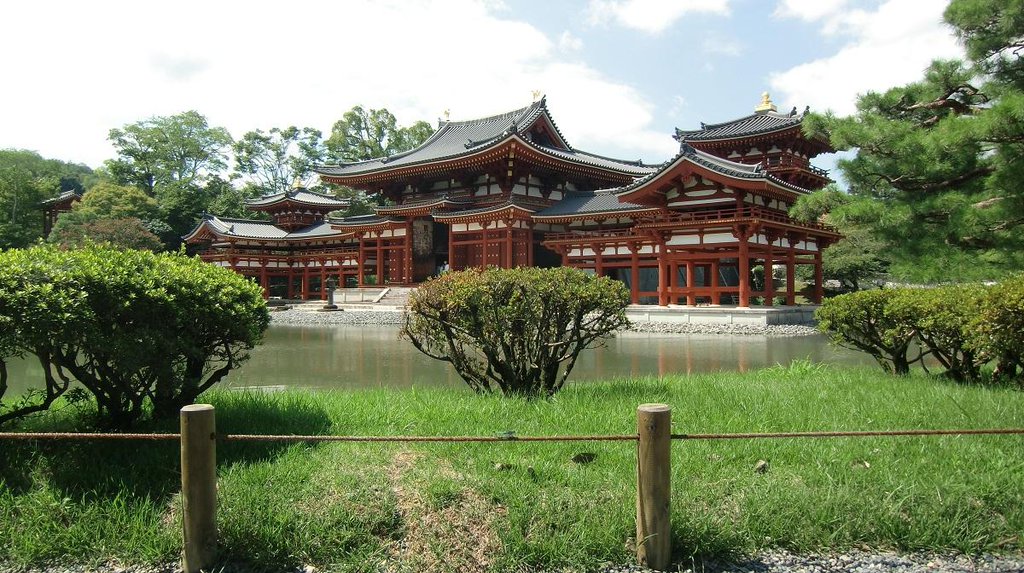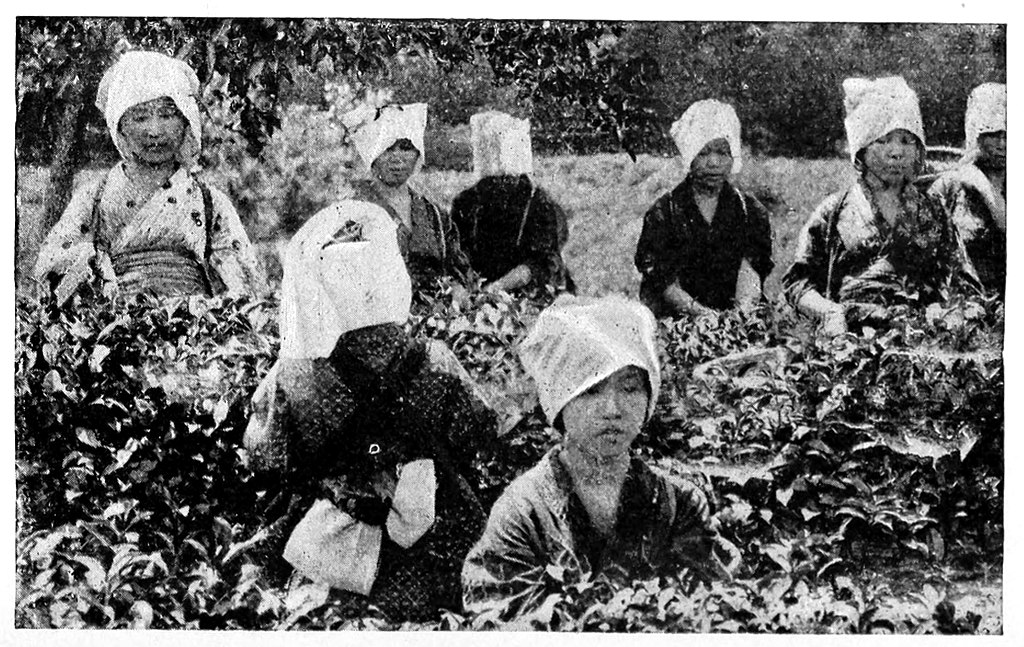Uji as seen by three ladies from the West
Uji has been a favourite destination of mine since I noticed my favorite author Lord Dunsany had written about the bodhisattvas on clouds in the Hoo-do hall of Byodo-in. (You can see the details here.)
Though there is no telling exactly how he came to know them, researching the possible source of his imagination helped me find three Western women who had visited Uji before 1933.
First, the renowned British traveler Isabella Bird (1831-1904) wrote how she entered the area in Volume Two of Unbeaten Tracks of Japan (1880). Her letter LV goes:
We crossed the broad Ujikawa, which runs out of Lake Biwa, by a long and handsome bridge, and went as far as the pretty little town of Uji, which has some of the loveliest tea-houses in Japan, hanging over the broad swift river, with gardens and balconies, fountains, stone lanterns, and all the quaint conventionalities which are so harmonious here. These tea-houses are ceaselessly represented by Japanese art, and if you see a photograph of an ideal tea-house, you may be sure it is at Uji.
The persevering explorer also recalls her experience with Orramel Hinckley Gulick (1830-1923), a member of the American Board of Commissioners for Foreign Missions, at a tea-house in the town:
I had not before seen a European man in one of these fairy-like rooms, and Mr. Gulick being exceptionally tall, seemed to fill the whole room, and to have any number of arms and legs! I knew that the tea-house people looked at us with disgust.
Afterwards, the writer explains the history of tea in Uji in detail:
Uji is one of the most famous of the Japan tea-districts, and its people told us that two crops a year have been taken from the same shrubs for 300 years. The Japanese say that tea was drunk in the Empire in the ninth century, when a Buddhist priest brought the teaseed from China; but it seems that its culture died out, and that it was naturalised a second time in the twelfth century, when a Buddhist priest again brought seed from China, shortly after which tea was planted at Uji.
Next, a similar theme with a focus on tea gardens is taken up by the American geographer Eliza Ruhamah Scidmore (1856-1928), one of the proponents of planting Japanese cherry trees in Washington, D.C. In her book Jinrikisha Days in Japan (1891), the Iowan writes of “the finest tea district of Japan” together with a photo entitled “Picking Tea”:
Groups of bobbing hats beside the tea-bushes, carts loaded with sacks and baskets of tea-leaves; trays of toasting tea-leaves within every door-way, a delicate rose-like fragrance in the air; women and children sorting the crop in every village; and this was the tea season in its height. Here were bushes two and three hundred years old yielding every year their certain harvest, and whole hill-sides covered with matted awnings to keep from scorching or toughening in the hot sun those delicate young leaves, which are destined to become the costly and exquisite teas chosen by the sovereign and his richest subjects.
Following this, Uji is featured in the book In Bamboo Lands (1895) by the American writer, Katharine Schuyler Baxter (1845-?). In a way reminiscent of Bird, she points out, “The tea-houses of Uji are ideal and are ceaselessly represented by Japanese art.” However, she also refers to how good Japanese tea tastes and the reason why:
The tea was delicious and brewed to perfection, as the Japanese are tea epicures. The water for making the beverage is heated but never allowed to boil, and after remaining on the leaves for a moment, until it becomes a greenish straw color, the infusion is poured off, or the result would be bitter.
In addition, Baxter mentions another attraction of Uji – Byodo-in temple.
Our inefficient guide, anxious to redeem his reputation, induced us to visit an old Buddhist temple founded in 1052, and noted for its kakemonos, scrolls, and relics of Yorimasa – a warrior of the twelfth century, who, after “prodigies of valor,” hard pressed by his enemies, committed harakiri at the age of seventy-five. Phoenix Hall, in the same grounds, is an ancient building, reproduced at the World’s Fair in 1893.
Not everything in Uji was pleasant to the traveler, though. She bought bamboo shoots to decorate the carriages that she and her companion boarded, but her purchases proved a source of trouble:
Then, as a bolt out of the blue, and without knowing the cause, we were stopped by an official, who demanded our passports, opened them, and pointed angrily to a certain line. We glanced at the translation and learned that we were accused of “injuring plants,” and were answerable for a breach of the law. I can imagine what a forlorn appearance we must have presented at that moment, as, surrounded by an excited crowd, we waited for our stupid guide to explain to the not less stupid official that the bamboo had been paid for with good, honest silver. Another five minutes was consumed in appeasing the villagers, who could not comprehend why foreigners should be allowed to destroy shrubs to adorn kurumas. Peace was restored at last, and we were allowed to proceed after the offending branches had been torn away and hidden under the seats.
Unfortunately, the lingering pandemic has made tourism in Japan more sluggish than ever, and Uji is no exception. The city is one of the places which I am eager to visit when the state of emergency is lifted and we are completely free from pathological threats. Ah, how I miss the days when I could take an occasional look at the Uji River while walking across the bridge, see a stone statue of Lady Murasaki close to the entrance of Byodoin Omotesando, stroll along the stone-paved approach, and imprint on my mind the beauty of the Amida Buddha statue surrounded by bodhisattvas on clouds inside the Hoo-do hall!

************************
Sources
Isabella Bird https://archive.org/details/unbeatentracksin02bird_0/page/262/mode/2up
Eliza Ruhamah Scidmore https://archive.org/details/jinrikishadaysin00scid/page/n321/mode/2up
Katharine Schuyler Baxter https://archive.org/details/inbamboolands00baxt/page/278/mode/2up (pp.278-280)

